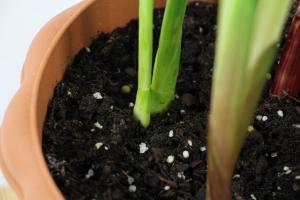How to Ship Plants
Shipping plants can be a daunting task, but with the right knowledge and materials, it can be done successfully. Whether you are sending a gift to a friend or moving to a new home, shipping plants requires special attention and care to ensure that they arrive safely.
Here are some tips on how to ship plants:
Choosing the Right Container
The first step in shipping plants is choosing the right container. Plants should be shipped in sturdy, rigid containers to prevent damage during transit. You can use cardboard boxes, plastic containers or even wooden crates. Make sure that the container is the right size so that the plant is not cramped, but also not too loose to move around. Line the container with plastic to keep the soil in place and finish with bubble wrap for extra protection.
Preparing the Plant for Shipping
Preparing the plant for shipping is crucial to its survival during transit. Trim any excess foliage or branches to prevent damage and retain moisture. Water the plant thoroughly the day before shipping to ensure it has enough water to last during transit. It is also advisable to add a small amount of slow-release fertilizer to the soil.
Choosing the Right Carrier
When shipping plants, it is important to choose the right carrier. Choose a carrier that specializes in shipping live plants and has experience in handling them. The carrier should be able to provide adequate protection during transit and have knowledge of any regulations or permits that may need to be obtained for the shipment.
Packing the Plant for Shipping
When packing the plant for shipping, make sure it is secure in the container and cannot move around during transit. Use packing material such as shredded paper or bubble wrap to fill any gaps and provide cushioning. Seal the container with tape, making sure that it is completely sealed and labeled "live plants" to ensure proper handling.
Shipping the Plant
When shipping the plant, choose a shipping method that will get it to its destination as quickly as possible to minimize stress on the plant. Overnight shipping is preferable, especially during extreme weather conditions. Monitor the tracking information closely and provide any necessary instructions to the recipient.
Receiving the Plant
After the plant has arrived, carefully unpack and inspect it for any damage during transit. Water the plant immediately and allow it to acclimate to its new environment before giving it full light exposure. Keep an eye on the plant for any signs of stress or damage in the following days.
Final Thoughts
Shipping plants may seem intimidating, but with the right knowledge and materials, it can be done successfully. Take the time to properly prepare and pack the plant to ensure that it arrives at its destination in the best possible condition. Choosing the right carrier and shipping method can also make a big difference in the success of shipping plants.

 how many times do yo...
how many times do yo... how many planted tre...
how many planted tre... how many pine trees ...
how many pine trees ... how many pecan trees...
how many pecan trees... how many plants comp...
how many plants comp... how many plants can ...
how many plants can ... how many plants and ...
how many plants and ... how many pepper plan...
how many pepper plan...




























